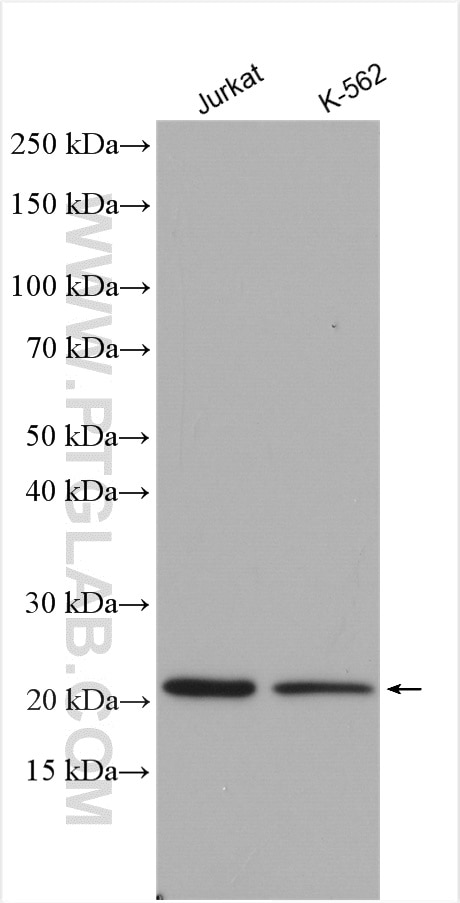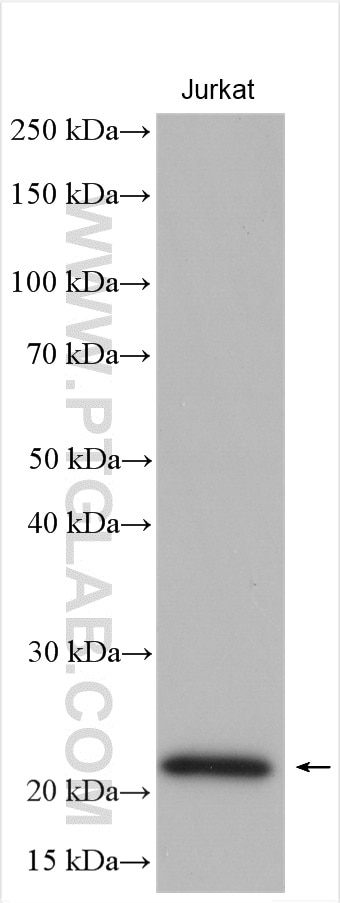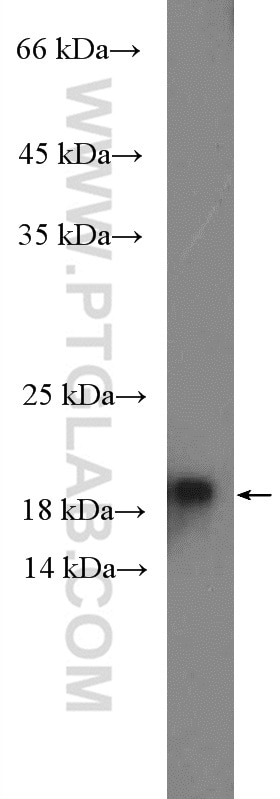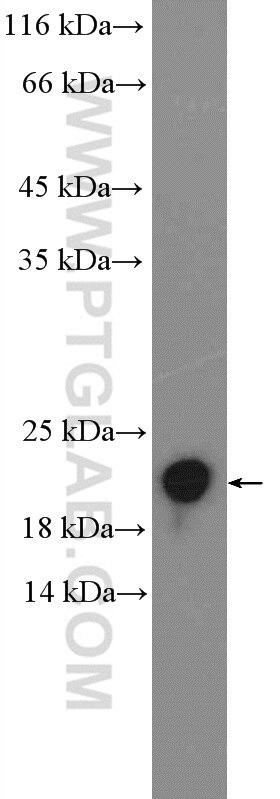Anticorps Polyclonal de lapin anti-RHOG
RHOG Polyclonal Antibody for WB, ELISA
Hôte / Isotype
Lapin / IgG
Réactivité testée
Humain
Applications
WB, ELISA
Conjugaison
Non conjugué
N° de cat : 21576-1-AP
Synonymes
Galerie de données de validation
Applications testées
| Résultats positifs en WB | cellules Jurkat, cellules HeLa, cellules K-562, cellules MCF-7 |
Dilution recommandée
| Application | Dilution |
|---|---|
| Western Blot (WB) | WB : 1:500-1:1000 |
| It is recommended that this reagent should be titrated in each testing system to obtain optimal results. | |
| Sample-dependent, check data in validation data gallery | |
Informations sur le produit
21576-1-AP cible RHOG dans les applications de WB, ELISA et montre une réactivité avec des échantillons Humain
| Réactivité | Humain |
| Hôte / Isotype | Lapin / IgG |
| Clonalité | Polyclonal |
| Type | Anticorps |
| Immunogène | RHOG Protéine recombinante Ag16118 |
| Nom complet | ras homolog gene family, member G (rho G) |
| Masse moléculaire calculée | 191 aa, 21 kDa |
| Poids moléculaire observé | 21 kDa |
| Numéro d’acquisition GenBank | BC104178 |
| Symbole du gène | RHOG |
| Identification du gène (NCBI) | 391 |
| Conjugaison | Non conjugué |
| Forme | Liquide |
| Méthode de purification | Purification par affinité contre l'antigène |
| Tampon de stockage | PBS with 0.02% sodium azide and 50% glycerol |
| Conditions de stockage | Stocker à -20°C. Stable pendant un an après l'expédition. L'aliquotage n'est pas nécessaire pour le stockage à -20oC Les 20ul contiennent 0,1% de BSA. |
Informations générales
RHOG, also named as ARHG, belongs to the small GTPase superfamily and Rho family. It is required for the formation of membrane ruffles during macropinocytosis. And it is required for the formation of cup-like structures during trans-endothelial migration of leukocytes. In case of Salmonella enterica infection, it is activated by SopB and SGEF, which induces cytoskeleton rearrangements and promotes bacterial entry. This antibody is specific to RHOG.
Protocole
| Product Specific Protocols | |
|---|---|
| WB protocol for RHOG antibody 21576-1-AP | Download protocol |
| Standard Protocols | |
|---|---|
| Click here to view our Standard Protocols |





